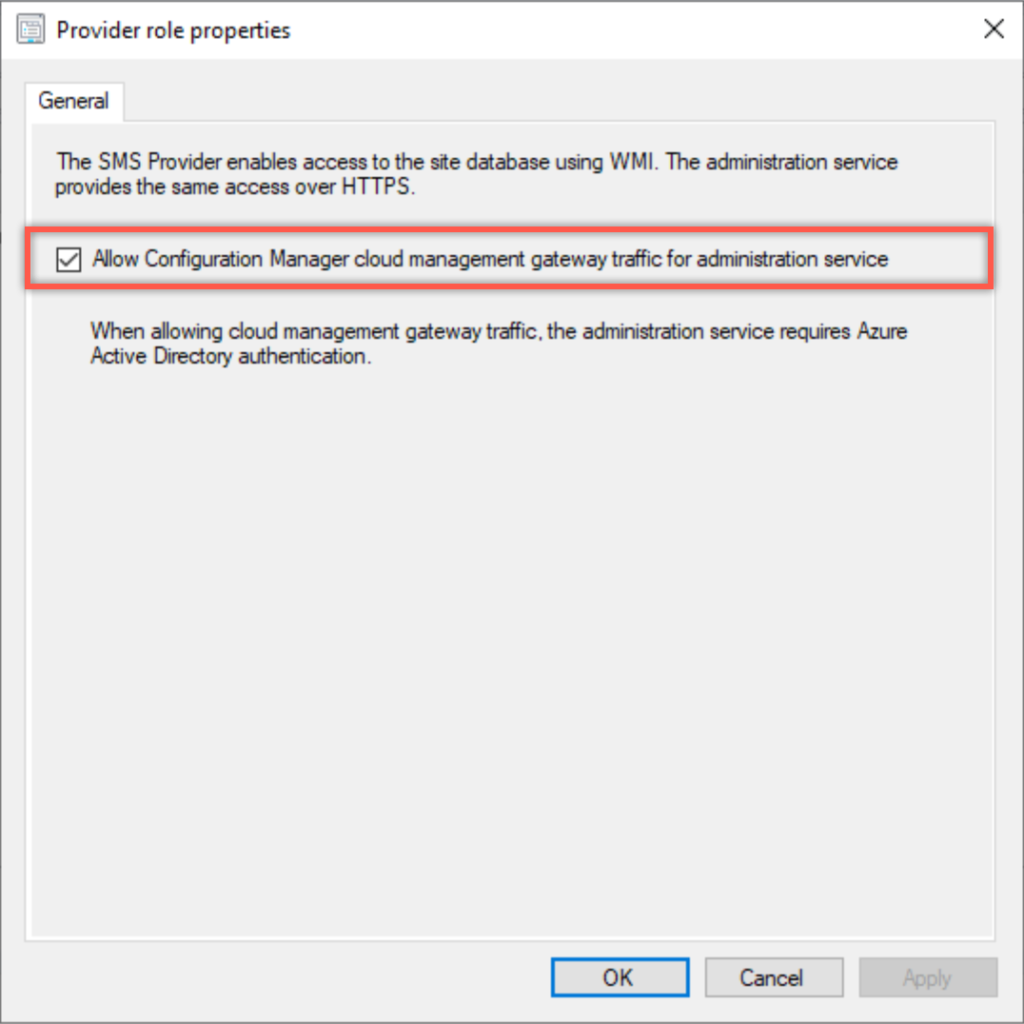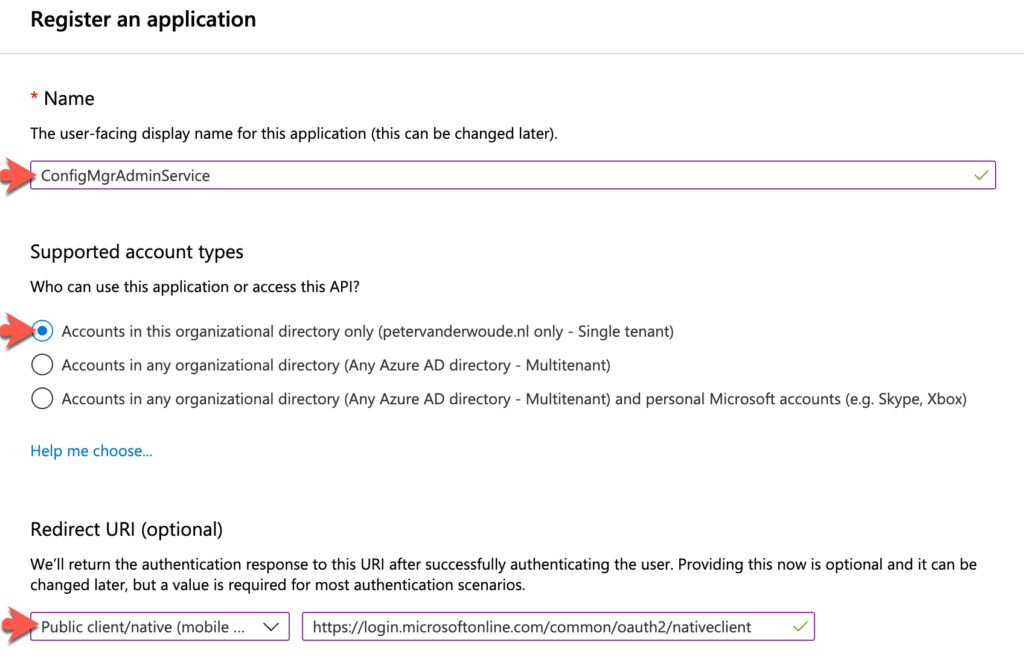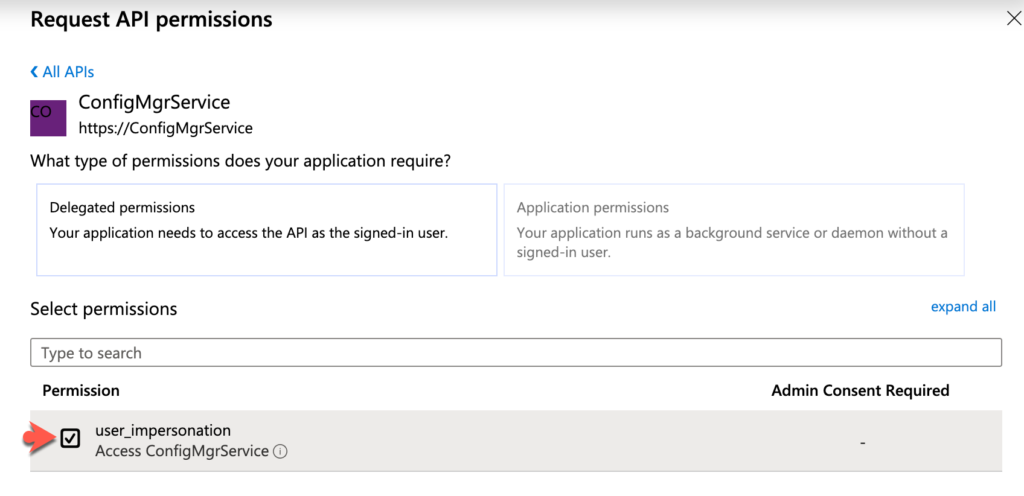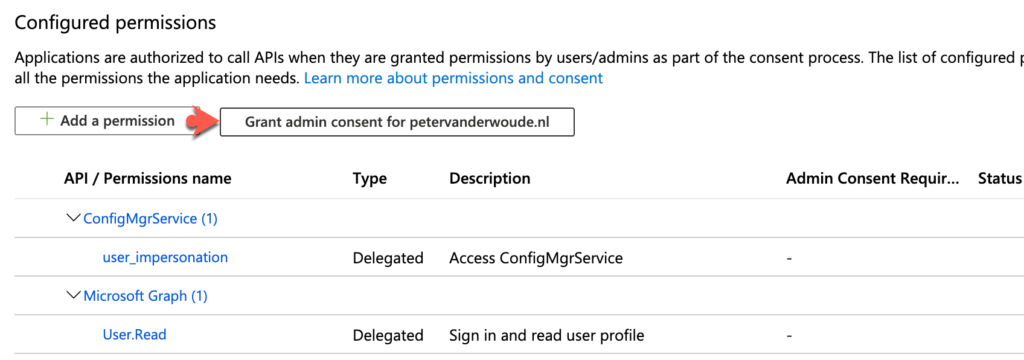This week is all about the administration service in Configuration Manager. More specifically, about enabling the Configuration Manager administration service via the cloud management gateway (CMG) to make it available over the Internet. The administration service provides API interoperability access to WMI over HTTPS via the SMS Provider. This REST API can be used in place of a custom web service to access information of the Configuration Manager site. Some really good information and starting points about this subject can be found at this blog post by Adam Gross. In this post I’ll skip the basics and specifically look at making the administration service available over the Internet. I want to provide in my own style what the configuration requirements are and why they are needed. I’ll start this post by showing the required configurations in Configuration Manager and in Azure AD and I’ll end this post by retrieving the most common parameters for scripting.
Before starting with the actual configurations, I want to post a little thank you message: Thank you Sandy for answering my (dumb) questions while I should simply read better.
Configuring the SMS Provider properties
The administration service is available with the installation of the SMS Provider. Every site system with an SMS Provider has the administration service. Before being able to enable the SMS Provider over the CMG, the following prerequisites should be in-place:
- The server that hosts the SMS Provider role requires .NET 4.5.2 or later
- Enable the SMS Provider to use a certificate, by either using Enhanced HTTP or by manually binding a PKI-based certificate on the server that hosts the SMS Provider role
- A running CMG (as I’m not going through that installation)
When those prerequisites are in-place, the SMS Provider can be configured to allow CMG traffic for the administration service by following the next three steps.
- Open the Configuration Manager administration console and navigate to Administration > Overview > Site Configuration > Servers and Site System Roles
- Select the server that hosts the SMS Provider role, select the SMS Provider role and click Properties in the Site Role tab to open the Provider role properties dialog box
- On the Provider role properties dialog box, select Allow Configuration Manage cloud management gateway traffic for administration service and click OK

Figure 1: Allow traffic for the administration service
Register a new app with Azure AD
For accessing the administration service via the CMG, two apps must be created within Azure AD, 1) a Web app (also known as a Server app within Configuration Manager) that is used for making the administration service available and 2) a Native app (also known as a Client app within Configuration Manager) that is used for obtaining an access token for the user. That access token can be sent in a request to the Web app, which authorises the user and returns the administration service.
During the creation of the cloud services within Configuration Manager a Web app and a Native are already created. I need to (and can) access the administration service via that created Web app, but I don’t want to reuse the existing Native app as I need to make some adjustments and I don’t want to interfere with existing functionalities. The following steps walk through the registration and configuration of a new Native app with the required configurations to obtain and access token for the user and be able to sent that token in a request to the Web app.
- Open the Azure portal and navigate to Azure Active Directory > App registrations to open the App registrations blade
- On the App registrations blade, click New registration to open the Register an application blade
- On the Register an application blade, provide the following information (as also shown below) and click Register
- Name: Provide a valid name for the Web app (in this post: ConfigMgrAdminService)
- Supported account types: Select Accounts in this organisational directory only ({yourTenant} only – Single tenant)
- Redirect URI (optional): Select Public client/native (mobile & desktop) and provide https://login.microsoftonline.com/common/oauth2/nativeclient as Redirect URI

Figure 2: Register and application
Note: The mentioned redirect URI, is the latest recommended value for desktop applications running on Windows (see also: https://docs.microsoft.com/en-us/azure/active-directory/develop/scenario-desktop-app-registration).
- After the registration of the app, navigate to Authentication to open the Authentication blade
- On the Authentication blade, navigate to the Default client type section and select Yes with Required for the use of the following flows where a redirect URI is not used (as shown below) and click Save

Figure 3: Default client type
- Navigate to API permissions to open the API permissions blade
- On the API permissions blade, click Add a permission to open the Request API permissions blade
- On the Request API permissions blade, select APIs my organisation uses and select the Web app – the standard name of that app is ConfigMgrService (as shown below) – that was initially created during the setup of the cloud services to open the specific API permissions blade

Figure 4: Select an API
- On the specific API permissions blade, select Delegated permissions, select user_impersonation and click Add permissions (as shown below) to return to the API permissions blade

Figure 5: Select API permissions
- On the API permissions blade, select Grant admin consent for {yourTenant} (as shown below

Figure 6: Grant consent
Retrieve the parameters to start with PowerShell
After configuring the SMS Provider properties, registering and configuring the Native app, the administration service is available via the CMG. The next step is to actually externally connect with the administration service. However, this might be an open door, but before doing that it’s good to understand that the user that is authentication and connecting with the administration service must have sufficient permissions within Configuration Manager.
At this moment I won’t provide an example, that might be something for a future post, but for now I’ll refer to this great post by Zeng Yinghua (also known as Sandy) and this repository about the Microsoft Graph (as the idea for retrieving a token is the same). The main challenge in any of those scripts is getting the token. To successfully achieve that, the following information is often required.
- Application (client) ID of the Native app that is named ConfigMgrAdminService in this post. That information can be found in the Azure portal at Azure Active Directory > App registrations > ConfigMgrAdminService > Overview (shown in the figure below with number 1).
- Tenant ID of the Native app that is named ConfigMgrAdminService in this post. That information can be found in the Azure portal at Azure Active Directory > App registrations > ConfigMgrAdminService > Overview (shown in the figure below with number 2).
- Redirect URI of the Native app that is named ConfigMgrAdminService in this post. That information can be found in the Azure portal at Azure Active Directory > App registrations > ConfigMgrAdminService > Overview (shown in the figure below with number 3) or copying the information that was provided in step 3 during the registration of Native app in Azure AD.

Figure 7: Native app overview
- Application ID URI of the Web app that is named by default ConfigMgrService. That information can be found in the Azure portal at Azure Active Directory > App registrations > ConfigMgrService > Overview (shown in the figure below with number 4)

Figure 8: Web app overview
- External URL of the administration service. That information can be the easiest retrieved in SQL by using the query below on the ConfigMgr database
select ExternalEndpointName, ExternalUrl from vProxy_Routings where ExternalEndpointName = 'AdminService'

Figure 9: Administration service external endpoint
More information
For more information about Configuration Manager administration service, please refer to the documentation about the SMS Provider.
It looks like Microsoft may have clarified the recommendations for the APP ID registration url to show the following recommened formatting:
api://{tenantId}/{string}, for example, api://5e97358c-d99c-4558-af0c-de7774091dda/ConfigMgrService
https://{verifiedCustomerDomain}/{string}, for example, https://contoso.onmicrosoft.com/ConfigMgrService
In testing, I found that the https://Configmgrservice formatting prevents AAD user token retrieval. Device management seemed to work ok, but things like application request approval through the CMG did not until the App ID registration url was changed to recommended format. CcmAADBroker.log will show an error if this is not working properly.
Thank you for that GlennC!
Regards, Peter